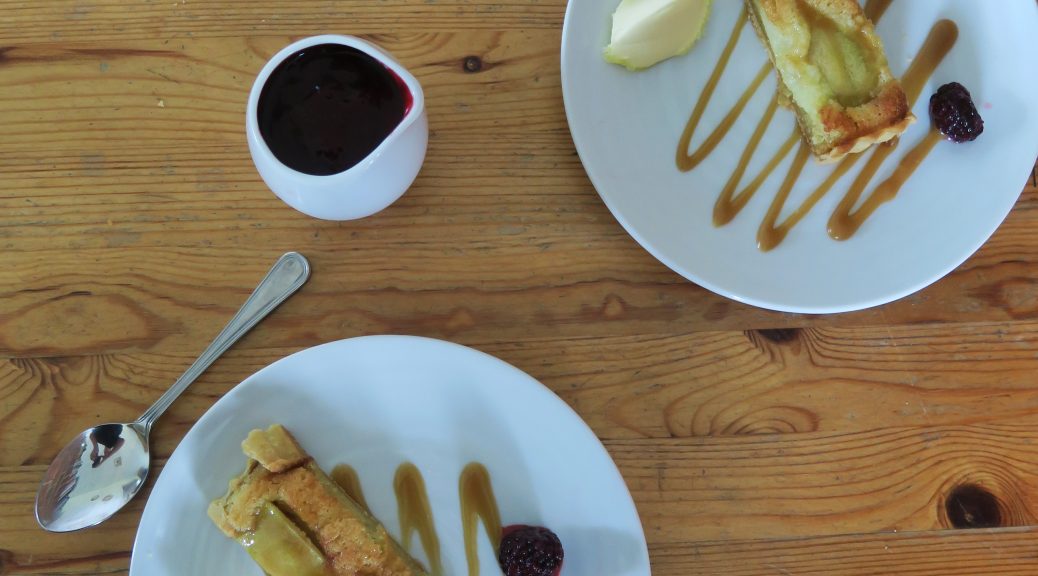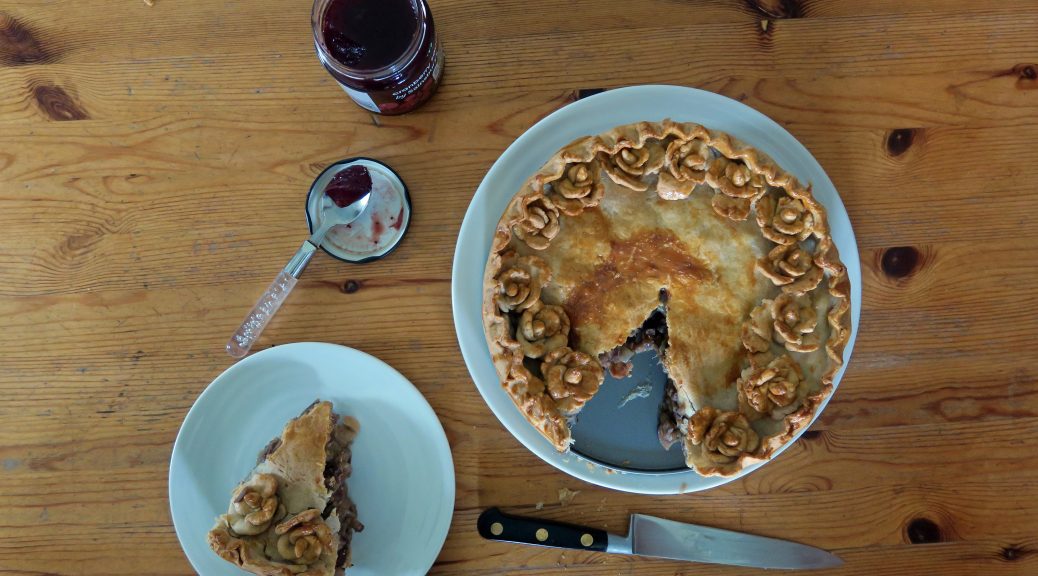
Vegan Woodland Pie
A couple of years ago I was a vegetarian, and although I liked it most of the time, when it came to Christmas, with all the turkey and trimmings on the table, I started to miss meat. Whilst at the time I had a great vegetarian substitute, it didn’t quite match up, and I just wanted something as good as the meat I couldn’t eat. I’m no longer a veggie, but when I was I developed this pie recipe which is so insanely good you don’t even realise it’s vegan, let alone vegetarian.

Full of beans and veg, this is surprisingly healthy for a pie – especially if you eat it without the crust. It’s stuffed with cranberries and chestnuts, so it’s prefect for a veggie main course at Christmas – you could even make individual pies instead of one large one, so you can cook up the exact number you need. The filling is also so good I’d recommend using it as stuffing, or as an accompaniment to your Christmas meat. Just make it up as instructed, but rather than putting it into a pie crust, roll it into balls and bake in the oven for 5-10 minutes to firm up and heat through.

You also don’t have to decorate it how I have. In all honesty I wasn’t going to decorate it at all apart from crimping the edge, but I was experimenting with a new pastry for this one and it dried out quicker than expected and cracked when I put the top on. As I wanted it to look nice for the blog I used the leftover pastry to make roses to cover up the cracks, and then I wanted to make enough to make a ring so that it looked uniform. But if you do want to jazz it up a bit you can use the rest of the pastry to make roses or leaves for the top.

Recipe
Serves 6
Time 1 hour (plus cooking time)
Ingredients
For the filling
- 1 tbsp Sunflower oil
- 1 White onion, finely chopped
- 1 Red onion, finely chopped
- 2 Medium leeks, finely chopped
- 2 Cloves garlic, crushed
- 225g Chestnut mushrooms, sliced
- 25g Dried cranberries
- 340g Tin of butter beans, roughly chopped
- 225g Ready-to-eat chestnuts, roughly chopped
- 50g Hazelnuts, chopped
- 5 Sprigs fresh thyme, chopped finely
- Salt and pepper to taste
- 3 tbsp Cranberry Sauce
For the pastry
- 280ml Water
- 115g Vegetable suet
- 500g Plain flour
- 1 tsp Salt to season
- 20ml Soya milk to glaze
Method
- Put the oil into a large sauce pan over a medium-high heat. Add the onions, leeks, and garlic and gently fry for 5 minutes until soft and starting to caramelise.
- Add the mushrooms, cranberries, beans, chestnuts and hazelnuts and cook on a medium heat until soft and dry – this will take about 10 minutes.
- Add the thyme to the mix, season with salt and pepper and then set to one side whilst you make the pastry.
- Pre-heat the oven to 180˚C. Take a deep loose-bottomed 23cm pie tin and grease with butter (you can also use individual moulds if you want to make individual pies).
- Put the water in a medium saucepan and bring to the boil over a medium-high heat.
- Once boiling add the suet and stir to melt and combine.
- Put the flour and salt into a bowl and pour over the melted water-suet mix. Using a round bladed knife mix everything into a dough and then turn out onto a work surface and knead for 3 minutes until smooth.
- Take ¼ of the pastry and set aside for now. Roll out the other ¾ of the pastry into a large circle, about the thickness of a pound coin. Unlike shortcrust you want this pastry relatively thick to that it doesn’t break.
- Gently fold the circle of pastry in half and in half again so you have a quarter of a circle in front of you. Put the point of the quarter into the centre of the lined tin and then unfold the circle and push the dough into the corners and up the sides of the mould. You want a little bit of overhang.
- Spoon 1 ½ tbsp of the cranberry sauce into the base of the pie. Spoon ½ of the filling on top, then spoon the rest of the cranberry sauce over the filling. Top with the rest of the filling. Don’t worry if the mixture goes over the top of the tin, as this will make a nice dome when covered in pastry.
- Roll out the other ¼ of pastry into a circle of the same thickness as before. Put the circle on top of the pie and trim the excess by slicing with a knife at a 45˚ angle to the tin.
- Using your thumbs and index finger crimp around the edge of the pie to seal everything together. Take the milk and brush lightly over the top of the pie to glaze.
- Put the pie in the oven for 45-55 minutes until the pastry is golden brown. Take out of the oven and serve immediately with gravy and vegetables.
Thanks for reading!
Emma x
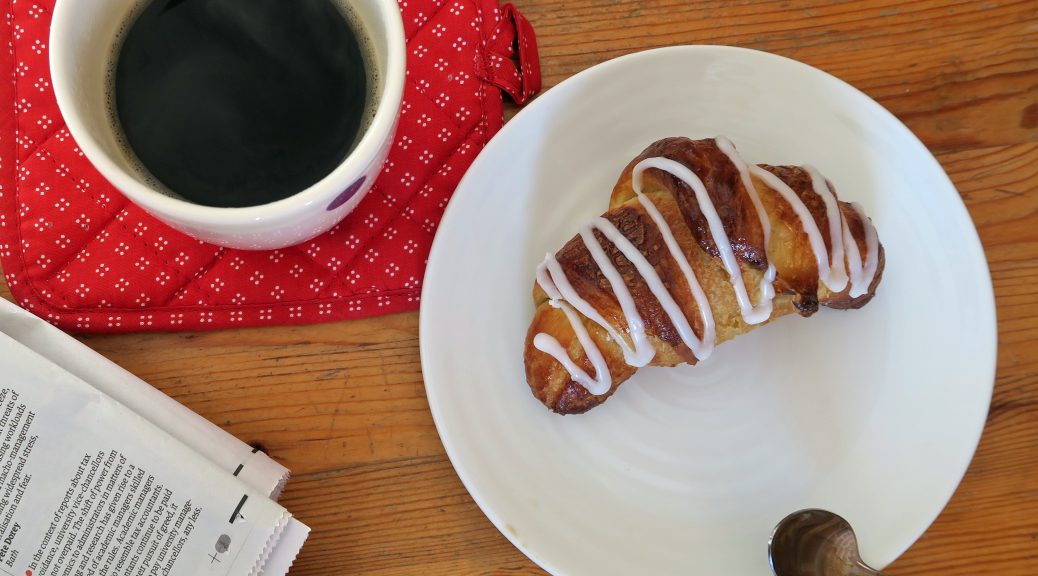
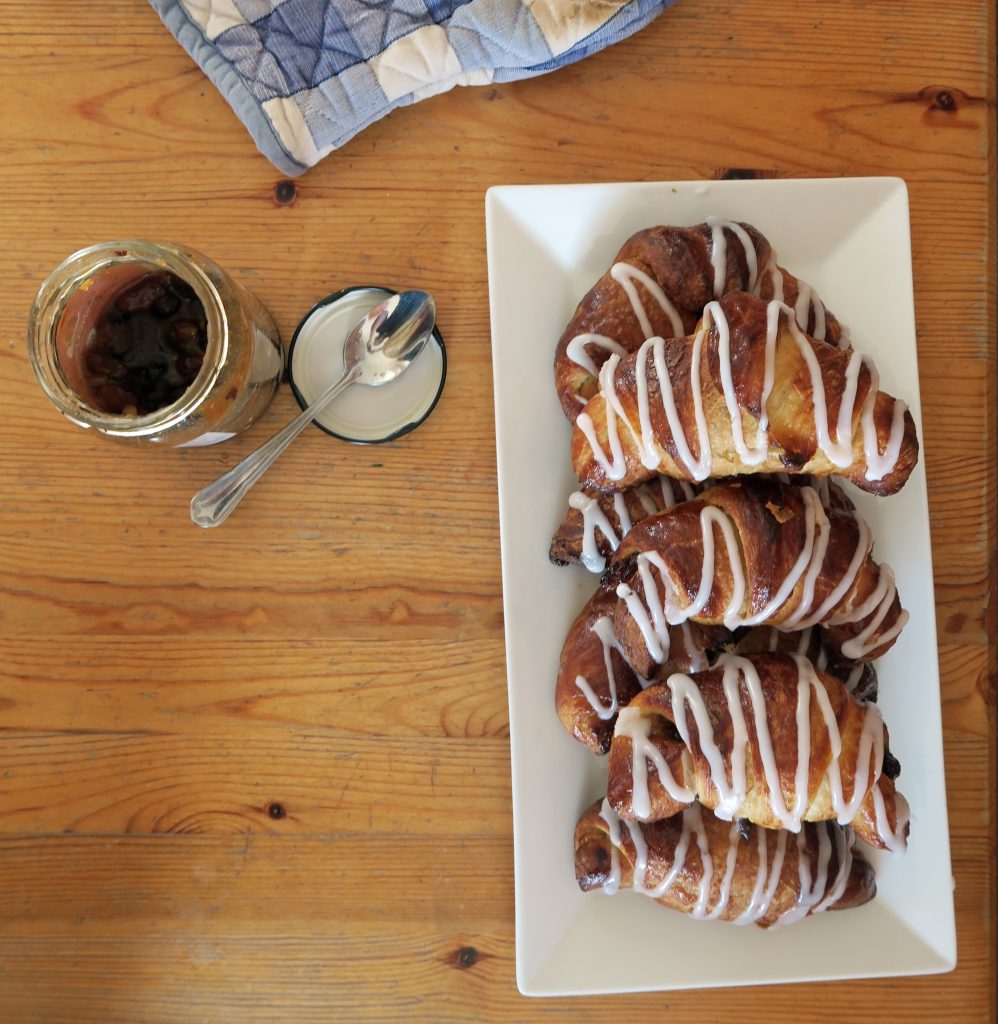
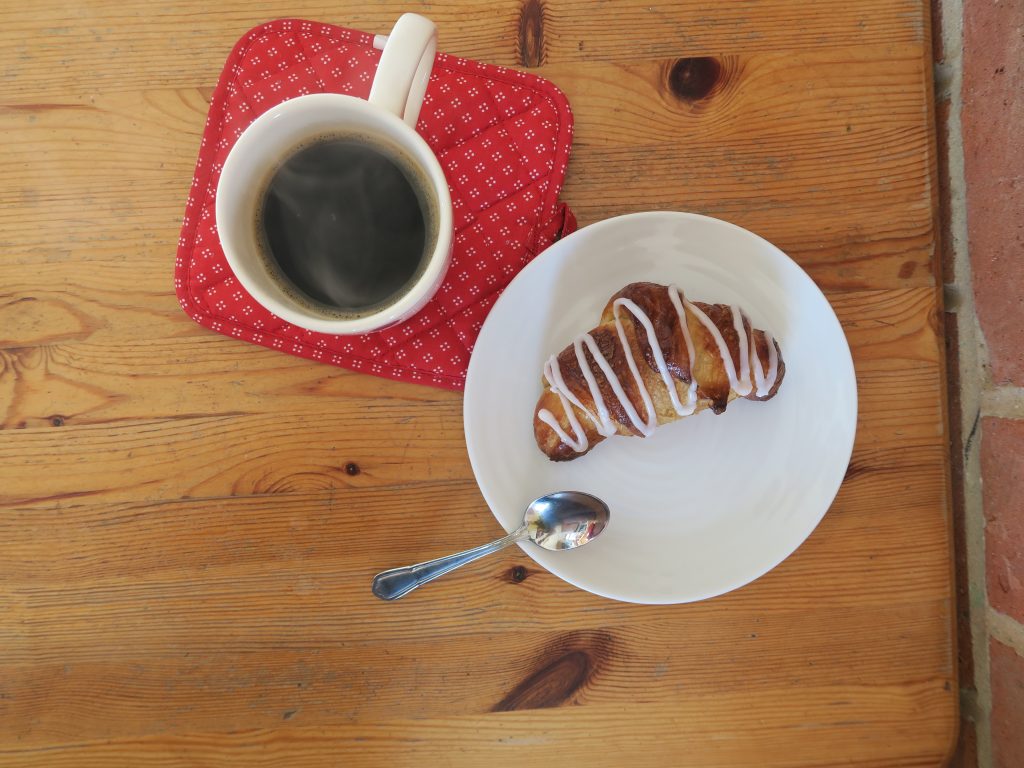
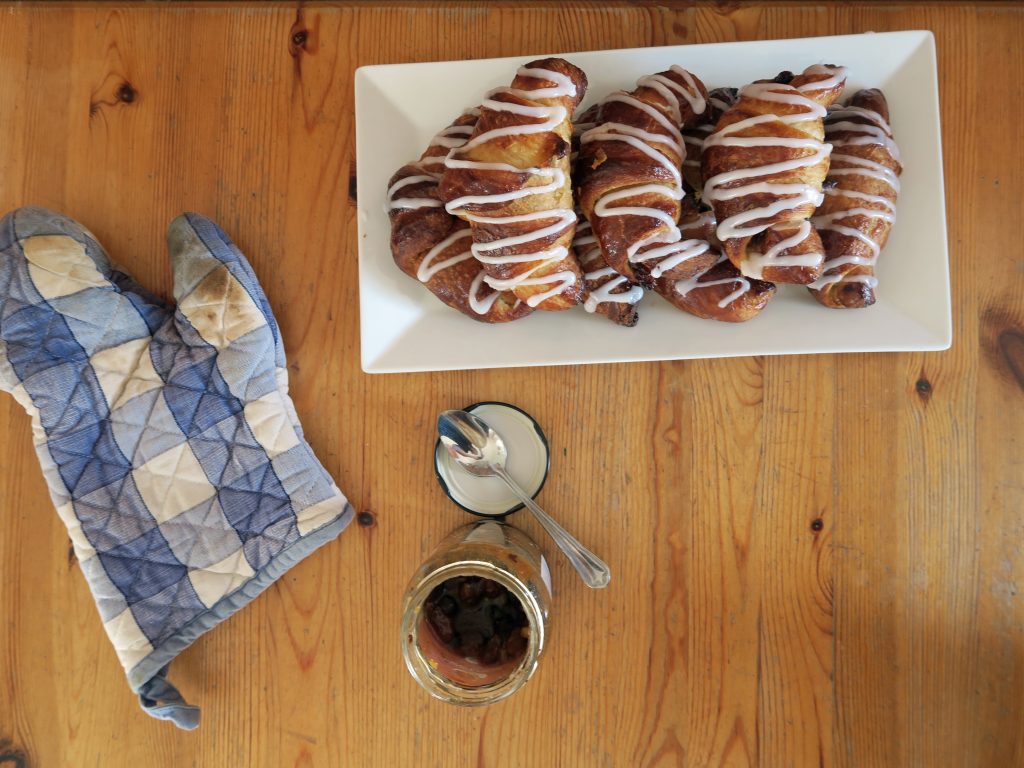
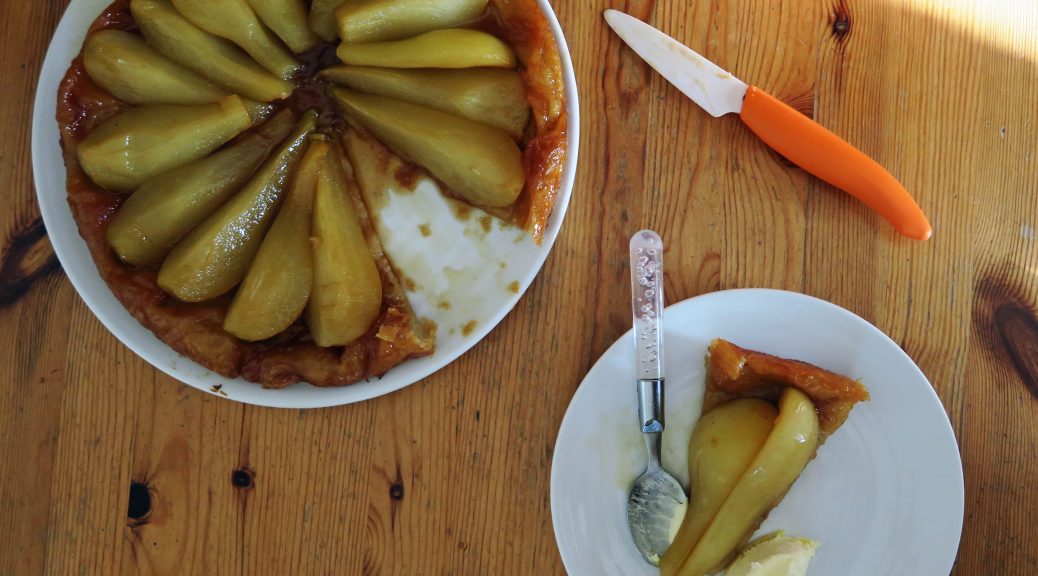
 The first time I ever made this I used shop bought puff pastry and roughly chopped apples. These are two great alterations to make if you want to save time or if you’re just starting to learn how to bake. On the other hand, if you haven’t made your own puff pastry before I’d recommend giving it a go. It takes a bit of time, but it’s not so much time that you have to work on it, more just that you have to leave it a lot to chill in between turns. This recipe is for rough-puff which is a slightly easier and quicker variation on full-puff pastry, but it still gives a beautiful light and crispy pastry.
The first time I ever made this I used shop bought puff pastry and roughly chopped apples. These are two great alterations to make if you want to save time or if you’re just starting to learn how to bake. On the other hand, if you haven’t made your own puff pastry before I’d recommend giving it a go. It takes a bit of time, but it’s not so much time that you have to work on it, more just that you have to leave it a lot to chill in between turns. This recipe is for rough-puff which is a slightly easier and quicker variation on full-puff pastry, but it still gives a beautiful light and crispy pastry.





